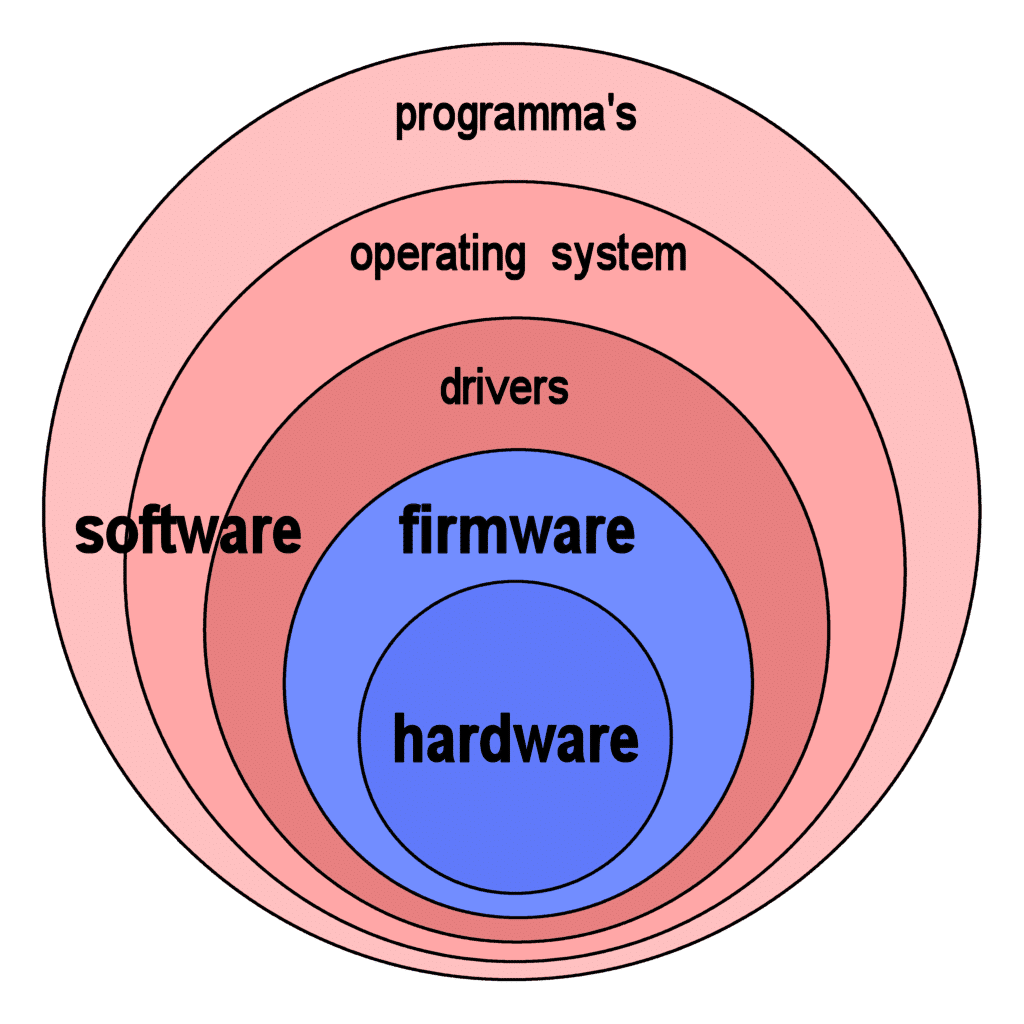
Firmware is a small software that makes hardware work and does what its manufacturer intended. It is composed of programs written by software developers to make the hardware go. Without firmware, most of the electronic devices we use on a daily basis would not be able to do anything.
They cover an extensive range; Typical examples are digital cameras, computers, CD players, DVD players or MP3 players, routers, mobile phones, road navigation devices, video game consoles as well as components such as hard disks, keyboards or monitors. even clearer, let’s take another example: a basic computer motherboard without firmware would not know how to detect hard drives or video card from your computer. If the hard drives did not have firmware in them, they would not know how fast to rotate or when to stop. A wireless network card would not know how to use a particular radio frequency.
For more complex hardware devices, such as smartphones, tablets, smart TVs, intelligence clocks and similar devices, the firmware is a kind of “linkage” between hardware and the operating system.
On such devices, the firmware contains only the instructions necessary for the hardware to work with the operating system installed. We know the firmware is software written directly into our hardware devices. The firmware is usually stored on particular types of memory, called flash ROM. ROM is the acronym for Read Only Memory, and this type of memory should only be written once by the hardware manufacturer.
A ROM is required for any electronic device because it must be able to retain the written information on it permanently even if the device is switched off. You can not produce a hardware device that forgets the firmware because it would stop working when you unplugged it. Still, the flash ROM is a particular ROM, because although the hardware manufacturer originally writes it, it can be rewritten.
You can write new firmware on a hardware device but you can only do it with a firmware update tool designed specifically for the device.
Simple firmware is typically stored in ROM or OTP/PROM, while a more complex firmware requires flash memories to allow for updates. There are as many firmware variations as there are hardware devices.
There is firmware for computer motherboards (called BIOS or UEFI), there is firmware in hard drives, SSDs, CD/DVD/Blu-Ray drives, firmware in network cards, routers, range extend even in your mouse and your gaming keyboard.
In some areas, instead of firmware or microcode is called “software“, which creates the potential for misunderstanding, the software being generally the program or programs of a computer or programmable device.
Do not confuse with the driver, which is software for a computer that is as functionality between the operating system and the hardware of that computer.
Although both have the role of allowing the hardware to function and do what it was designed to do, a significant difference is that the firmware is stored on the hardware itself, while the drivers are installed in the system operation.
The firmware also starts up alone and does what it is programmed to do while the drivers are started and executed by the operating system.
The most important difference between them is that the firmware tells the hardware what to do, while the driver tells the operating system how to communicate with that hardware.

